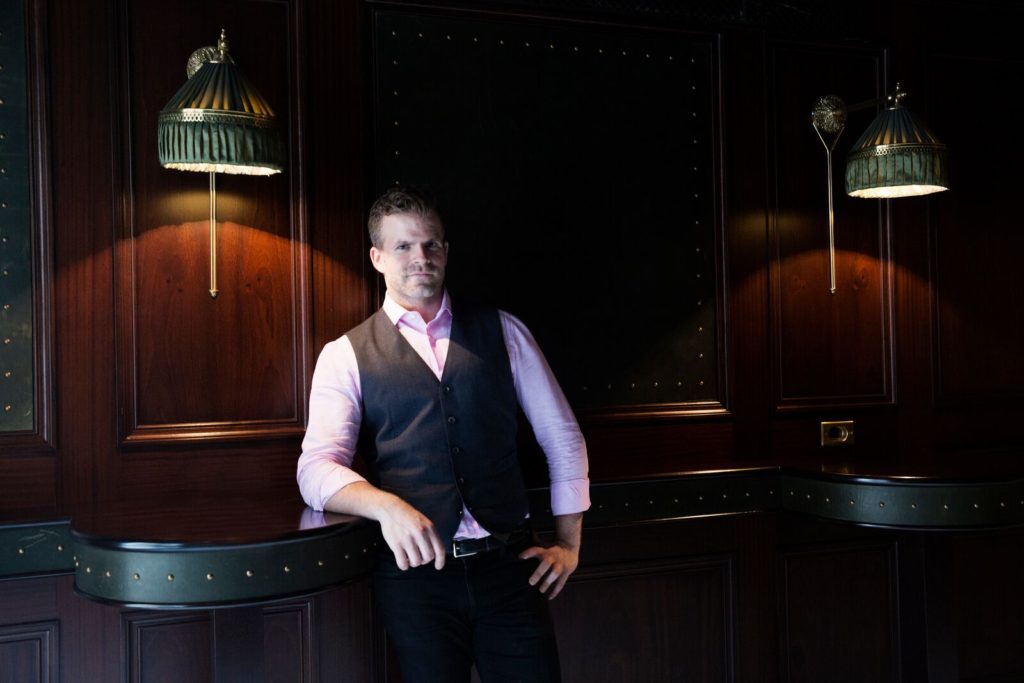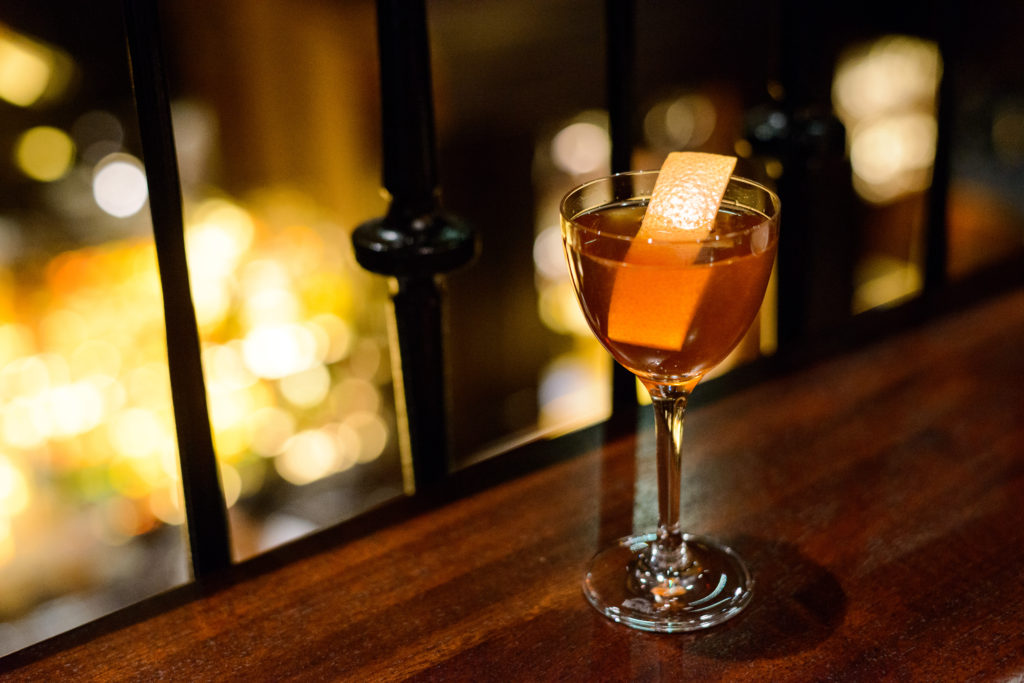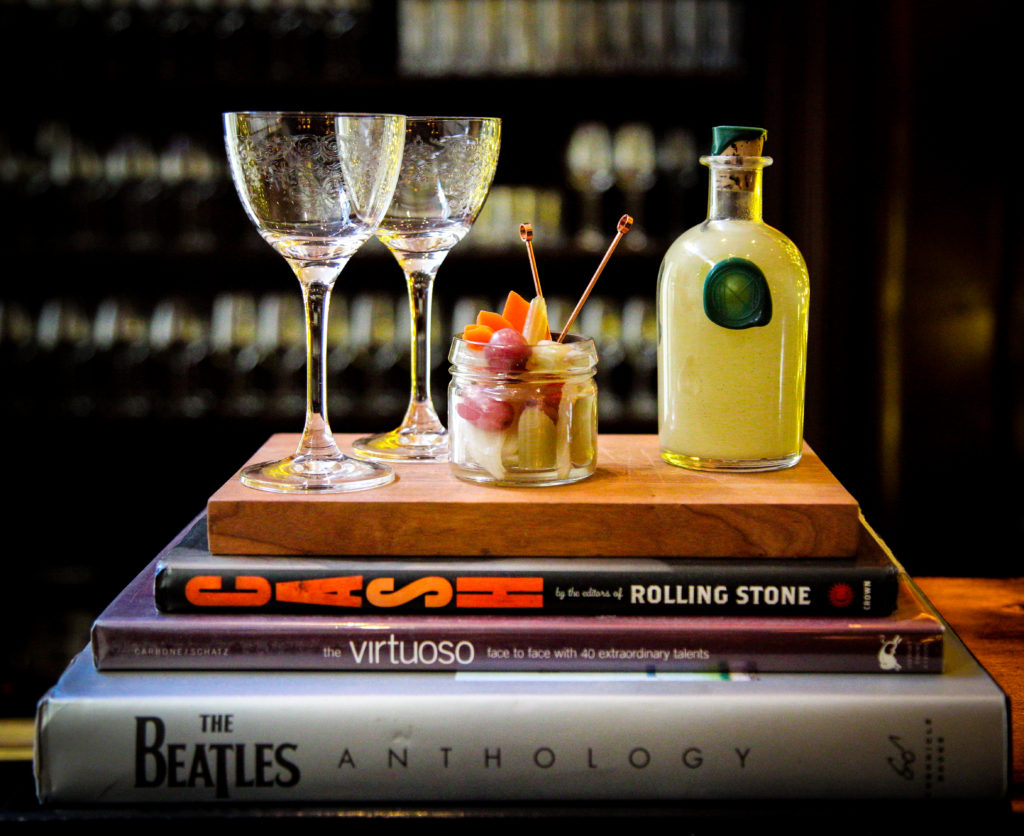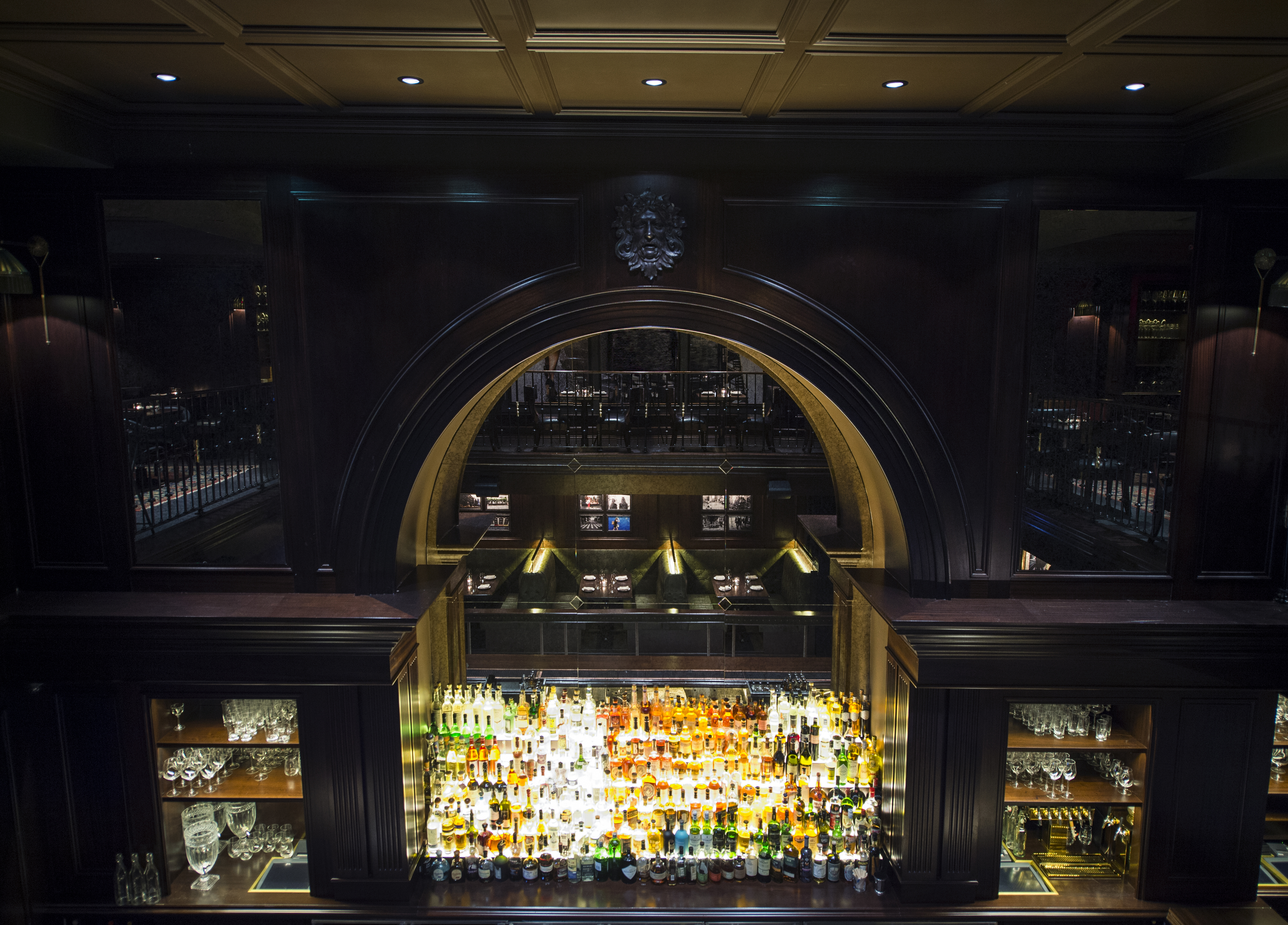Last October, the NoMad Bar in Manhattan was named #3 on the World’s 50 Best Bars list for 2017, and the best bar on the continent of North America. Given the vast number of swanky watering holes in New York City alone, this is a phenomenal achievement. The judges said, among other things, that in just five short years, the NoMad has become “one of the most essential bars in the city – and now the world, having been crowned Best Bar in North America.” How does a team create such an establishment? Who were the visionaries behind this achievement? And what’s next? Read on, dear reader, read on.
Leo Robitschek is the Bar Director for the Make it Nice hospitality group. In that capacity, he’s responsible for the beverage programs at Eleven Madison Park (named the Best Restaurant in the World in 2017) and at the two bars at the NoMad Hotel (the original “Elephant” Bar, and the newer NoMad Bar). Recently, our Dandelion Chandelier Food Editor arranged for us to sit down with Leo in the Library at the NoMad Hotel near Madison Square Park to hear his story, and to learn more about the strategic decisions that rocketed the NoMad to the top of the list in record time.

Leo Robitschek at the NoMad Bar
It starts, as so many New York stories do, with a beautiful space and one person’s dream. The NoMad Bar and its sister lounge the Elephant Bar are stunning, soaring spaces that hark back to the first golden age of cocktails in Manhattan, when dark-paneled and dimly-lit speakeasies and private clubs were the norm, and the cocktail of choice was a martini, an Old Fashioned, or a Manhattan.
That swanky era was the one that Leo grew up enamored of. As a child in Miami, he was occasionally brought to New York for visits, and it became his goal to move to the city. When he arrived, he found that the iconic hotel bars – places like the Algonquin and the Oak Room – had become shadows of their former selves. Concurrently, he found himself becoming more interested in the world of hospitality – especially wine and spirits. “I started working at Sushi Samba, and we were required to take classes in wine, beer and sake – a lot of the staff found them boring, but I liked them.” He joined Eleven Madison Park in 2005, at a time when the bar program had seen a fair amount of leadership turnover. “I inherited some interesting spirits from the prior teams, and Danny Meyer agreed that I could work on recreating some classic cocktails.”
As a cocktail master, Leo is self-taught: “I read a lot of books, learned how various spirits had been used, and then started working.” His first effort was recreating The Last Word: a Prohibition-era cocktail made with gin, maraschino liqueur, freshly pressed lime juice, and green Chartreuse. “I had a bottle of V.E.P. Chartreuse – it’s a vegetable liqueur made only by monks, originating in the 1700’s – the ingredients include 130 different herbs and plants, and it comes in green or yellow versions. It’s one of the few monastic spirits left, and only two monks know the secret recipe. V.E.P. means it’s been aged for a long time.” It proved to be a hit, and thus was the Last Word actually just the beginning.
From there, Leo and his team joined a small number of establishments that were determined to revive cocktails – and cocktail culture – in New York City. “At the time, there were only three cocktail bars doing anything like what we were trying to do: the Flatiron Lounge, Milk and Honey and the Pegu Club.” That group of owners and mixologists proved to be prescient. European spirits became more prevalent in the US, and over time the Eleven Madison Park beverage team perfected a set of reinvented classics, and then went on to start concocting their own proprietary cocktails.

The NoMad Bar’s Black Dahlia Cocktail; Photo Credit: Mark Roaquin
That effort coincided with the arrival of a new Chef and a new restaurateur: the team of Daniel Humm and Will Guidara. “When Chef and Will arrived, they set out to make Eleven Madison Park the best restaurant in the world. And we all agreed that it should also have the best bar in the world.”
Thus, a marriage between the kitchen and the bar was born. “Our first proprietary cocktail was based on Daniel Humm’s classic duck – it’s the only menu item that is still there from the time he arrived. We took scotch, lavender and honey and created the B-Lavender cocktail.” Over time, the bar team worked with the same flavor combinations – and some of the same techniques – being used in the kitchen. Combined with seasonal ingredients, those techniques led to far more nuanced and unusual flavors. “We were using things like tangerine and tarragon – and making kitchen-centric cocktails.”
In 2008, the bar team at Eleven Madison Park hit its stride. “We started making our own ginger beer, grenadine, and flavored syrups like cinnamon. We set out to use yogurt in a cocktail, as a homage to one of Daniel’s dishes that had horseradish and smoked salmon as key ingredients. When the tasting menu started in 2011, we began offering a wider variety of aperitifs, because people didn’t want a heavy drink at the start of an 11-course meal.”
Curiosity, hard work, a relentless drive for innovation and commitment to continuous improvement led to some interesting places. “We started using vermouth and Sherries in cocktails – we were among the first to do that. We started making ‘mocktails’ around that same time because the syrups and ginger beer we were making were perishable and we needed to use them up faster.”
The scrappiness and inventiveness of the team members is clear. “I questioned every step we took, and each bartender was given the opportunity to offer suggestions for how to make things better. We still do that today.”
The reinvented Eleven Madison Park – which reopened just four months ago – is even more ingredient-focused in its approach in the kitchen than it was before, which has led to further evolution in the restaurant’s cocktail menu. It’s now overtly ingredient-based, using the same seasonal ingredients as the kitchen. For the fall re-opening, that meant squash, celery root, seaweed, and chocolate. Seriously? In a cocktail? “We do two versions of each – one is lighter and meant to be an aperitif, and the other is heavier and richer.” There’s now a bar tasting menu – 5-7 courses for $155 (the dining room tasting menu is $295 for 10-11 courses). At the bar, diners can order snacks, desserts, and some a la carte entrees.
Meanwhile, a short stroll across Madison Square Park, an equally inventive and wildly successful new effort has been underway for five years. The NoMad Hotel opened in 2012, and the team from Eleven Madison Park (EMP) assumed the helm of its food and beverage service. “Because I oversee both operations, we can share certain training and techniques, and then each team can make them their own. We ‘workshop’ ideas for new cocktails frequently, and the two teams do that together. But the ultimate offerings at EMP are lot riskier, while the ones at the NoMad are more playful. EMP will do a cocktail inspired by a Waldorf salad. The NoMad will serve drinks in flaming skulls.”
The playfulness is not just figurative – there are actual games being played at the NoMad Bar. Leo explains: “One of the things we do that is really different from a lot of other hospitality organizations is a one-day strategic planning process once a year. Everyone works in teams, and great ideas come out of it. One of them was the card game.”

The NoMad Bar’s Walter Gibson cocktail
At the NoMad bar, guests are offered a deck that has two different kinds of playing cards. One is various drinks – including champagne, wine, beer and various spirits. The others are “mood cards.” You choose one kind of drink, and up to three mood cards, and the bartender will create a cocktail that perfectly suits you.
“That idea emerged because we felt that too many times hospitality providers are trying to do things to people, not for people. Like they offer you a complementary glass of champagne when you arrive. But what if you really want a cocktail or a glass of wine? What if you don’t like champagne? The playing cards let us give our guests exactly what they want at that moment.”
There’s an air of playful magic about all of this. And in fact, there’s actual magic at the NoMad. “On the second floor, we had a space that was supposed to be used as a conference room, but it never really got used. We’re all nerds here, and we love magic, and we kept thinking about how to get people to see how cool magic is. We met a company called Theory Eleven, and they created a magic show for us a couple of years ago that now happens every weekend – that unloved second floor room has become a popular theater space.”
So what’s next? On January 21, the NoMad Los Angeles will open at the corner of 7th and Olive downtown. Like its New York cousin, the West Coast property will be housed in a historic building. “The LA property will feel lighter and brighter than New York – more turquoise, gold, white and blue – more Mediterranean. New York is more baroque and French.” Some of the cocktails will be the same, but the focus on local and seasonal ingredients will mean that there will be some distinct differences. “There’ll be fewer root vegetables and things found in the Hudson Valley, and more ingredients that are local to LA.”
We know some things are going to be exactly the same in LA: the energy, wittiness, elegance and deliciousness of the NoMad will surely make the trip. We can’t wait to see it. And to see what happens next in the brilliant career of its cocktail master.
Join our community
For access to insider ideas and information on the world of luxury, sign up for our Dandelion Chandelier newsletter. And see luxury in a new light.

